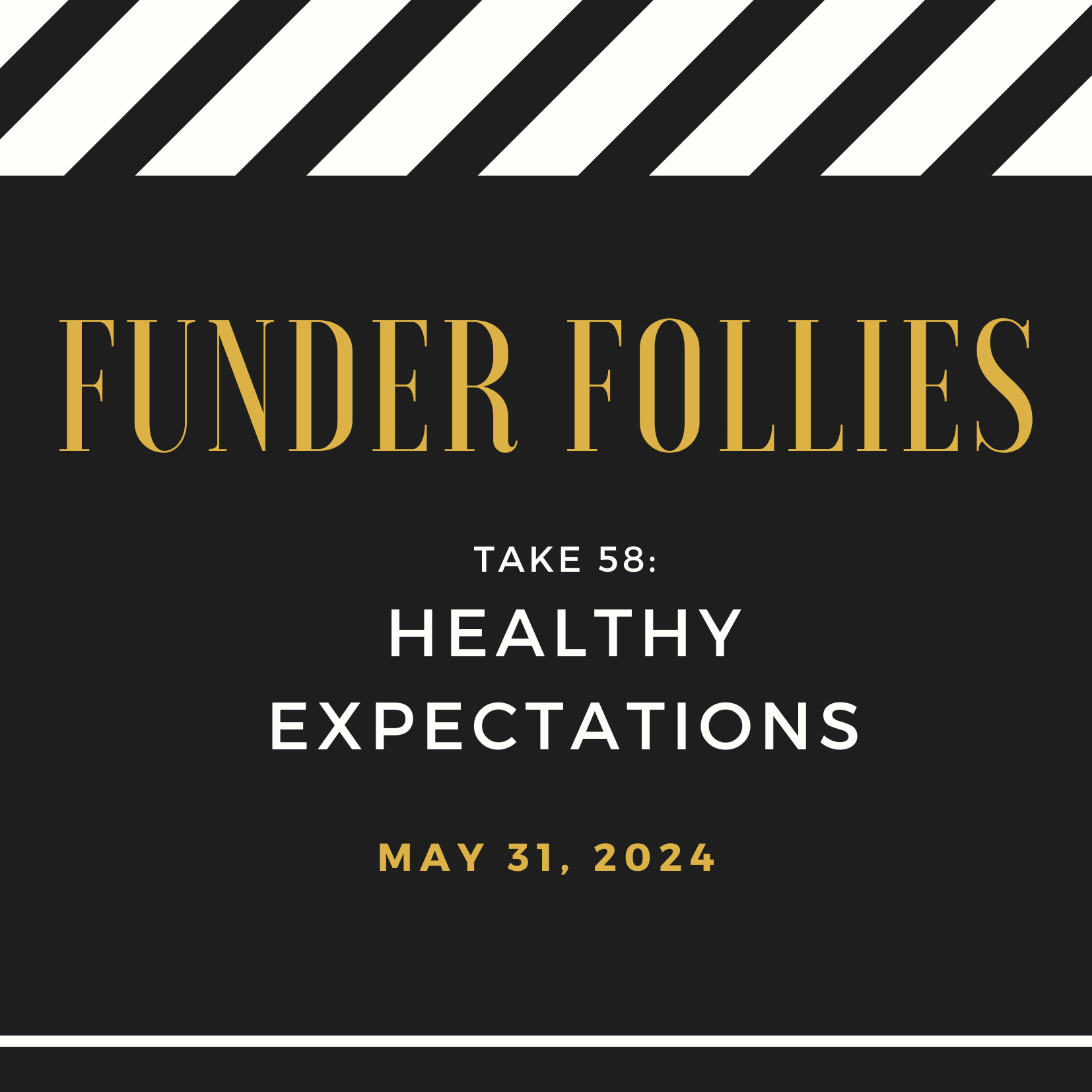Funder Follies #58: Healthy Expectations

One funder’s great guidelines, timeline and communication.
Last month, our regional community foundation posted a grant opportunity that had a fantastic process. Curious how that can look? Read on.
Fast Funding Decisions
Here’s the timeline for the Marin Community Foundation’s Community Power Initiative:
February 20 – RFP posted and applications open.
April 5 – Applications due. (Why at 2pm? I’d like to think they were hoping to deter a late Friday night for nonprofit staff perfecting their submission.)
May 30 – Awardees announced. (Grantees are celebrating today!)
July 1 – Funding begins.
Less than three months from submission to funding. That’s fast.
A short timeframe is great – and unusual. So was the tone.
Centering Grantees
The application opens with a paragraph about the foundation’s impact. Fair enough.
But then it’s all about the nonprofits doing the work:
Inherent in [our] vision is an acknowledgement of the vital role that trusted nonprofit organizations play in Marin. These organizations represent a 24/7, boots-on-the-ground presence in the county — the people that day in and day out, provide skilled, critical services and support to those in need. They build social capital and grassroots leadership through their longstanding and holistic commitments to their neighborhoods. They seek to change the systems at the root of inequity. They drive both proven and newly fostered, innovative solutions to our community’s most vexing and troubling challenges. These are the groups that embody and represent the power of community and the ability of community itself to care for, uplift, and transform.
Too often though, philanthropic support comes with more strings than flexibility, more reporting requirements than partnership, and as many months of application-writing as months of support. Nonprofit leaders are left chasing dollars instead of serving their communities and fighting for equity. Power continues to reside with grantmakers instead of communities. We at MCF believe the time has come to put more power in the hands of those that are most directly engaged in the work: organizations serving our community, working tirelessly to create the world that we all wish for — a world of peace, opportunity, and dignity.
This is such a refreshing message. And it’s a huge step forward from the because-we-have-gobs-of-money-we-are-great message that we hear from far too many funders.
Graduated Giving
The proposal suggested two different types of potential grantees and allowed applicants to answer questions differently, depending on their resources. And “resources” were defined broadly.
The distinction between “larger” and “smaller” nonprofits was not budget size.
Many small-staffed nonprofits receive government funding that is restricted to specific community needs: their budget looks big, while they bootstrap operations and other programs with minimal resources. This application gave voice to the different ways organizations solve big problems.
1) larger organizations that play an essential, irreplaceable role in Marin County through their services and/or advocacy to marginalized communities at scale, and
2) smaller organizations that are taking unique, innovative, or entrepreneurial approaches to their missions to be more effective in creating impact.
Yes! Small = entrepreneurial. Innovation is good! Scrappy nonprofits are not weak or ineffective. They’re just smaller. (Maybe they can pivot more easily in response to community needs.) MCF also invited networks and collaborations to apply in either category.
Abundant Information
The application provided lots of information that made it easy to understand funding priorities. They communicated about things like:
Clear amounts for general operating support – They defined a maximum grant amount, and guidelines about this grant in the context of an organizational budget. They also shared the total pot of available funding.
Flexible grant terms – Applicants could request an amount per year, for 1-3 years.
Specific deadlines – a date and time were provided.
Grant status – If you visited the grant website after that deadline, you were redirected to a page that shared the number of applications, the total “asks” ($47M for $10M in funding), and when they’ll announce awards.
FAQs – Anticipating common questions is super useful and saves grantees time.
Funding priorities – They asked about goals, a plan, commitment to equity, intended audience and how they give input on the program, community impact, outcomes tracking, finances and funding, and leadership and partnership.
The questions – You have no idea how uncommon it is for a funder to provide the questions in a format that can be easily dropped into a working .doc. Most just have them in an online form, which is hard as heck to copy.
Contact info – “If you have any questions, please don’t hesitate to contact our community engagement team at ceteam@marincf.org.” Nice.
Marin Community Foundation’s process offered alternatives to applicants. Questions were modified to make it easier and more relevant to the prospective grantee. What a wonderful concept!
Like this example? Tell them at ceteam@marincf.org – and please mention you read about it at Funder Follies.


